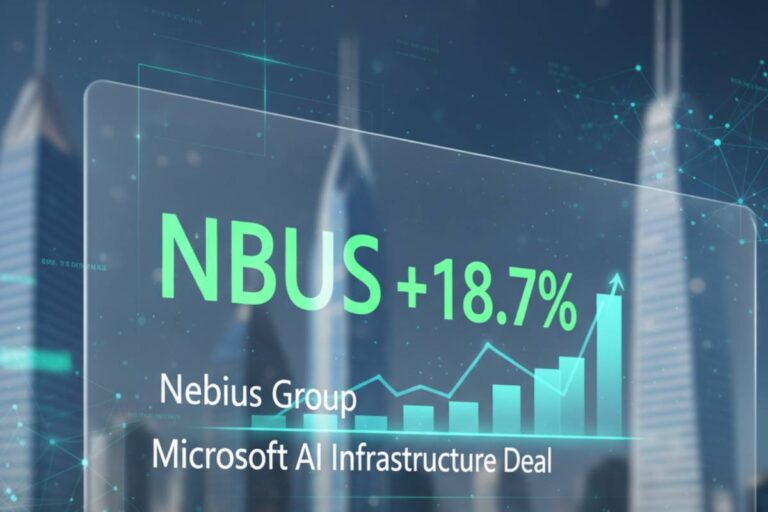The tech world is about to face the music. This year, more than 100,000 people have lost their jobs, and we’re not even done yet. It’s not just new businesses that are having a hard time staying alive or mid-sized companies that are cutting costs. We’re talking about big people. Amazon, Intel, Microsoft, and TCS. Names that used to seem bulletproof.
What is causing this? Mostly AI. Automating. A reality check after the pandemic that makes businesses admit they hired too quickly when money was cheap and growth seemed endless. The bill is due now.
Why were there so many tech layoffs in 2025
According to Layoffs. fyi, a tracker that anyone in tech should read, 218 companies have laid off workers this year, cutting more than 112,700 jobs around the world. That’s about 491 people losing their jobs every day.
The reasons aren’t really a mystery, but they are uncomfortable. During the pandemic, businesses grew quickly, hiring thousands of people to meet the growing need for digital services. Everything sped up, from remote work to online shopping to cloud computing. But that boom couldn’t go on forever.
Now? Rates of interest are higher. The rate of growth has slowed. And AI is changing the very meaning of work. Executives are being very clear about it: they’re spending billions on AI infrastructure, generative tools, and automation systems that could take over whole departments.
Andy Jassy, the CEO of Amazon, said that he wants the company to “run like the world’s largest startup.” Less middle management, flatter hierarchies, and smaller teams. More machines are doing things that people used to do.
Intel’s Huge Cut in Workers
Intel’s job cuts are huge. The chipmaker said it will cut 24,000 jobs, which is about 22% of its global workforce. Facilities in the US, Germany, Costa Rica, and Poland are all feeling the effects.
Why did you make such a big change? Intel has had a hard time keeping up with competitors like Nvidia and AMD, especially in the AI chip market, where Nvidia is basically the industry standard. The company is trying to save money and put more resources into areas where it can really compete by restructuring.
But here’s the thing: these aren’t just numbers on a spreadsheet. These people are engineers, researchers, and manufacturing experts who have worked at Intel for years, sometimes decades, to build their careers. And they’re being told that their skills aren’t useful for the company’s future.
Amazon’s planned corporate downsizing
Amazon is cutting up to 14,000 jobs in its operations, human resources, devices, and AWS cloud units. Some reports say that when you add up all the divisions, the total could be as high as 30,000.
Employees have been getting impersonal text messages, some of which were sent early in the morning with instructions to check their email before coming into the office. It’s… Not a good look. A lot of workers who are affected have 90 days to find new jobs within the company.
This is one of the biggest cuts to Amazon’s workforce ever. It’s not the first time the company has done this; since 2022, Amazon has fired more than 27,000 people. Jassy calls this round “learner management” and a shift toward big investments in AI.
Microsoft’s plan to keep cutting jobs
Microsoft has laid off about 9,000 people this year in several rounds of cuts. Most of the layoffs were in the product and software divisions, and the main goal was to make management structures less hierarchical.
Microsoft cut 6,000 jobs in one round back in May. This was the company’s biggest cut since 2023. Almost 2,000 of them were in Washington state. What was the goal? Putting engineering talent ahead of administrative layers.
But employees have noticed the irony in this. Microsoft is putting money into OpenAI and its Copilot AI products at the same time that it is laying off the people who made its current software empire. The message is clear: the company is putting all its chips on AI and is getting rid of traditional software jobs.
TCS Records the Biggest Drop in Employees Ever
The numbers that India’s biggest IT exporter just released shocked the industry. Tata Consultancy Services laid off 19,755 people in the quarter that ended on September 30, 2025. This was the most jobs the company had ever cut in a single quarter. That brought the total number of employees below 600,000 for the first time since 2022.
The company is calling it “AI-led restructuring.” Sudeep Kunnumal, the Chief Human Resources Officer, told analysts that the cuts are mostly aimed at mid- and senior-level positions that have what he called a “skill and capability mismatch.”
But TCS isn’t just laying people off; it’s also training them again. The company wants to retrain about 100,000 workers each year, which is about one-sixth of its total staff. Harrick Vin, the Chief Technology Officer, said that generative AI is a change that is different from any other wave of technology.
But that doesn’t make it any easier for the nearly 20,000 people who lost their jobs this quarter. “Reskilling” sounds great in theory, but when you’re suddenly out of work in your 40s or 50s with a mortgage and a family to support, it can feel impossible.
Other big companies are also laying off thousands of workers
The bloodshed goes far beyond what is normal in the tech world.
Both Google and Meta have cut jobs, focusing on teams in the Android, hardware, and AI divisions. The goal is to cut costs and combine jobs that are similar, which is corporate speak for “we have too many people doing the same thing.”
Oracle has cut hundreds of jobs in its U.S. offices and is speeding up its move to cloud platforms powered by AI. The same pattern is happening: old businesses are getting smaller while AI investments are getting bigger.
Accenture, a huge global consulting firm, said it would cut thousands of jobs and warned that more could follow. Julie Sweet, the CEO, was surprisingly frank: many jobs just can’t be retrained for new AI-driven needs. The number of employees at the company went down from about 791,000 to 779,000, and more cuts are planned.
Non-Tech Sectors Join the Layoff Wave
This is no longer just a problem with technology. The old-fashioned industries are also getting hit.
UPS is cutting its workforce by 48,000 jobs, the most it has ever done. This is because automation is changing logistics networks. That’s not a mistake. There are 48,000 people.
Ford wants to cut between 8,000 and 13,000 jobs to make electric vehicle operations more efficient. The shift to electric vehicles (EVs) in the auto industry is making some people rich and some people poor. Many workers with experience with internal combustion engines are finding themselves on the wrong side of that change.
Due to the use of AI in tax and audit processes, PwC has cut 5,600 jobs around the world. You don’t need as many people when you can automate tasks like reviewing documents and analyzing data that used to take a lot of junior accountants.
Paramount Global cut 2,000 jobs because of losses in streaming and low demand for advertising. The entertainment industry is having a hard time changing because traditional cable is dying, and streaming margins are very small.
The AI Factor: How Automation Makes People Lose Their Jobs
This is where things start to get uncomfortable. AI is not only changing tech companies; it is also changing the types of jobs that exist.
According to outplacement firm Challenger, Gray & Christmas, generative AI adoption led to more than 10,000 job cuts in the US in the first seven months of 2025. The company now says that AI is one of the top five reasons why jobs are being cut this year.
This is very clear from what companies are saying. In a memo to employees, Shopify CEO Tobi Lütke said, “No more new hires if AI can do the job.” Luis von Ahn, the CEO of Duolingo, is using “AI fluency” as a standard for hiring and promotions.
McKinsey has put thousands of AI agents to work across the company, often taking over tasks that were once done by junior employees. Entry-level jobs are the ones that are being hit the hardest because those are the ones where tasks can be automated the easiest.
Think about it: AI systems can now do all of these things for a lot less money: reviewing documents, writing basic code, entering data, answering customer service questions, and creating simple content. And they don’t need to sleep, take time off, or get benefits.
The World Economic Forum’s Scary Prediction
The World Economic Forum’s 2025 Future of Jobs Report says that 41% of employers around the world plan to cut their staff in the next five years because of AI automation.
But here’s the catch: they aren’t going to wait five years. Companies are changing their teams, getting rid of jobs, and changing the way their businesses look in a world where AI comes first.
Who’s Getting Hit Hardest by Tech Layoffs
The cuts aren’t spread out evenly. Some roles and levels of experience are more likely to be affected.
Companies like Intel and Microsoft are cutting a lot of mid-level developers and engineers. These people have been working for 5 to 15 years, so they aren’t entry-level or senior leadership. They’re in that weird middle ground where their work is getting more and more automated or can be done by smaller teams with AI tools, but they cost a lot.
There are also cuts to the legal, sales, and marketing teams. Support functions that don’t directly bring in money are always at risk when a company is downsizing, but AI is making it easier to justify those cuts by saying that technology can make up for them.
The job market is hardest for junior staff and recent graduates. Companies are getting rid of entry-level jobs because they think AI can do them. That makes things worse: how can you get experience if there are no jobs for beginners? If you can’t get a job as a junior engineer, how do you become a senior engineer?
Economic Pressures That Go Beyond AI
AI is a big part of it, but it’s not the only thing that is causing layoffs.
Companies have to focus on making money instead of growing at all costs because interest rates are going up and borrowing is getting more expensive. The time of cheap money that helped tech grow so quickly is over.
Inflation keeps putting pressure on both business and consumer budgets. Businesses are trying to save money wherever they can, and one of their biggest costs is labor.
Companies are having to rethink how many people they need because their revenue growth is slowing down. You don’t need more workers if your business isn’t growing quickly.
Tariffs and operational costs are putting more pressure on businesses, especially those with global supply chains. Geopolitical tensions, such as the strained relationship between India and the US that TCS talked about on its earnings call, are making things even more uncertain.
Also, demand is going down in some product markets. These categories of products, personal computers, gaming consoles, and smart TVs, aren’t growing as fast as they used to. That hurts business units that are linked to those products, which makes them good targets for cuts.
Pandemic Overexpansion and the Fix
Let’s be honest about what happened. During the pandemic, tech companies hired a lot of people, which turned out to be unsustainable.
A lot of people started working from home. Online shopping took off. Everyone needed streaming entertainment, cloud services, and tools for working together. Companies rushed to hire anyone with the right skills, sometimes paying ridiculous salaries and giving benefits that seemed too good to be true.
They were too good to be true, it turns out.
Now we can see the correction. Businesses are admitting that they thought the pandemic boom would last longer than it did. They’re reorganizing for a “normal” environment where growth is steady but not huge.
The problem is that “correction” is a bloodless business term for thousands of people suddenly losing their jobs in a market that is becoming less friendly to workers.
The Future of Tech Jobs
So what happens next? If you’re a tech worker looking for job security, this isn’t very encouraging.
More businesses are likely to follow the lead of the leaders. If Amazon, Microsoft, and Google are laying off workers and putting money into AI, their rivals feel like they have to do the same. No one wants to be the company that is “inefficient” compared to its competitors.
People are saying that reskilling programs are the answer. TCS wants to train 100,000 workers every year. Other businesses are starting similar projects. But the truth is that not everyone can make the switch to AI-focused jobs. Some skills are hard to move from one place to another. Some workers can’t afford to completely retrain while also taking care of their families and themselves.
There won’t be many entry-level jobs. If companies think AI can do junior-level work, they’ll hire fewer juniors. That makes it hard for a whole generation of workers to get into the field.
Companies may hire more contractors and gig workers instead of full-time employees to keep things flexible. That means workers have less job security, fewer benefits, and more stress.
Changes in geography are already happening. Some businesses are moving their operations to places where costs are lower. In some places, that makes things possible, but in others, it makes them impossible.
What this means for the industry and its workers
The changes in the tech industry are having real effects on people that go beyond quarterly earnings reports.
More and more recent graduates and young tech workers are losing their jobs. There are now hundreds of people applying for each tech job, making the job market for tech jobs more competitive. People are taking longer to find new jobs after being laid off, and many are taking jobs that pay less or are less senior than the ones they had before.
The mental toll is also very high. Workers in fields where AI is changing quickly say they are more worried about losing their jobs. People who haven’t been fired are always wondering if they’ll be next.
There is a question about new ideas in the industry as a whole. What happens to the deep knowledge and creative problem-solving that leads to real breakthroughs when companies fire experienced engineers and hire AI tools instead? AI can improve and automate things, but can it really come up with new ideas? We will have to wait and see.
There is also a strange paradox about the growing skills gap. Companies say they can’t find people with the right AI skills, but they’re firing thousands of experienced tech workers who could be retrained. The gap suggests that “skills mismatch” might sometimes mean “we’d rather hire cheaper or automate everything.”
Bigger Effects on the Economy
The economy is affected when more than 100,000 tech workers lose their jobs in less than a year.
Most of the time, tech workers make a lot of money and spend a lot of it. When people are out of work or worried about losing their jobs, they spend less by eating out less, putting off buying a home, and cutting back on non-essential expenses. That has an effect on many areas, including restaurants, stores, real estate, and more.
Cities and areas that built their economies around tech hubs are under a lot of stress. People in and around Seattle, Silicon Valley, Bangalore, and other tech hubs don’t need as much housing, office space, or services.
There’s also a bigger question about whether this is a big change in how people work. If AI can really take over a lot of jobs in a lot of different fields, we might be entering a time of structural unemployment that needs policy changes, like a universal basic income, job guarantees, or other ideas that haven’t been tried on a large scale.
















